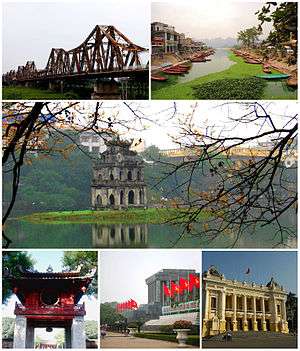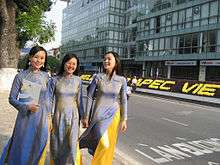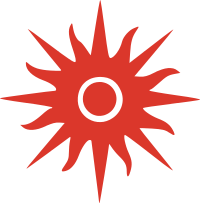Hanoi
Coordinates: 21°01′42.5″N 105°51′15.0″E / 21.028472°N 105.854167°E
| Hanoi Hà Nội | ||
|---|---|---|
| Municipality | ||
| transcription(s) | ||
| • Quốc ngữ | Thành phố Hà Nội | |
|
(from left) top: Long Biên Bridge, river near Perfume Pagoda; middle: Turtle Tower, bottom: Temple of Literature, Ho Chi Minh Mausoleum, Hanoi Opera House | ||
| ||
 Provincial location in Vietnam | ||
| Coordinates: 21°01′42.5″N 105°51′15.0″E / 21.028472°N 105.854167°E | ||
| Country |
| |
| Central city | Hà Nội | |
| Central district | Hoan Kiem and Ba Dinh | |
| Foundation as capital of the Đại Việt | 1010 | |
| Establishment as capital of Vietnam | September 2, 1945 | |
| Founded by | Lý Thái Tổ | |
| Demonym | Hanoians | |
| Government | ||
| • Party's Secretary | Hoàng Trung Hải | |
| • Chairman of People's Coucil | Nguyễn Thị Bích Ngọc | |
| • Chairman of People's Committee | Nguyễn Đức Chung | |
| Area[1] | ||
| • Municipality | 3,328.9 km2 (1,292 sq mi) | |
| • Urban | 233.56 km2 (90.18 sq mi) | |
| • Metro | 24,314.7 km2 (9,388.0 sq mi) | |
| Population (2015)[1] | ||
| • Municipality | 7,587,800 | |
| • Rank | 2nd in Vietnam | |
| • Density | 2,300/km2 (5,900/sq mi) | |
| • Urban | 3,435,394 | |
| • Urban density | 14,708.8/km2 (38,096/sq mi) | |
| • Metro | 16,100,000 | |
| • Metro density | 662.1/km2 (1,715/sq mi) | |
| Time zone | ICT (UTC+07:00) | |
| • Summer (DST) | No DST (UTC+7) | |
| Area codes | 24 | |
| GDP (nominal) | 2015 estimate | |
| - Total | 26.5 billion USD | |
| - Per capita | 3,500 USD | |
| - Growth |
| |
| Website | hanoi.gov.vn | |
Hanoi (/hæˈnɔɪ/[2] or US /həˈnɔɪ/;[3] Vietnamese: Hà Nội [ha˨˩ noj˩][4]) is the capital of Vietnam and the country's second largest city. Its population in 2009 was estimated at 2.6 million for urban districts[5] and 7 million for the metropolitan jurisdiction.[6] The population in 2015 was estimated at 7.7 million people. From 1010 until 1802, it was the most important political centre of Vietnam. It was eclipsed by Huế, the imperial capital of Vietnam during the Nguyễn Dynasty (1802–1945), but Hanoi served as the capital of French Indochina from 1902 to 1954. From 1954 to 1976, it was the capital of North Vietnam, and it became the capital of a reunified Vietnam in 1976, after the North's victory in the Vietnam War.
The city lies on the right bank of the Red River. Hanoi is 1,760 km (1,090 mi) north of Ho Chi Minh City and 120 km (75 mi) west of Hai Phong city.
October 2010 officially marked 1000 years since the establishment of the city.[7] The Hanoi Ceramic Mosaic Mural is a 4 km ceramic mosaic mural created to mark the occasion.
Names
Hanoi (河內, "River within/inside") has had many official and unofficial names throughout history.
- During the Chinese occupation of Vietnam, it was known first as Long Biên (龍邊, "Dragon edge"), then Tống Bình (宋平, "Song Peace") and Long Đỗ (龍肚, "Dragon belly").
- In 866, it was turned into a citadel and named Đại La (大羅, "Big Net"). This gives it the nickname La Thành.
- When Ly Thai To established the capital in the area in 1010, it was named Thăng Long (昇龍, "Ascending Dragon").
- During the Hồ dynasty, it was called Đông Đô (東都, "Eastern Metropolis").
- During the Lê dynasty, Hanoi was known as Đông Kinh (東京, "Eastern Capital"). This gave the name to Tonkin and Gulf of Tonkin.
- During the Ming Chinese occupation, it was called Đông Quan (東關, "Eastern Gate").
- Minh Mạng renamed the city Hà Nội (河內, "River within/inside") in 1831. This has remained its official name until modern time.
- Several unofficial names of Hanoi include: Kẻ Chợ (marketplace), Tràng An (long peace), Hà Thành (short for Thành phố Hà Nội, "City of Hanoi"), Thủ Đô (capital)
- In modern tourism, it is sometimes nicknamed Paris of the Orient, or Paris of the East.
History
Pre-Thăng Long period
Hanoi has been inhabited since at least 3000 BC. The Cổ Loa Citadel in Dong Anh district[8] served as the capital of the Âu Lạc kingdom founded by the Shu emigrant Thục Phán after his 258 BC conquest of the native Văn Lang.
In 197 BC, Âu Lạc Kingdom was annexed by Nanyue, which ushered in more than a millennium of Chinese domination. By the middle of the 5th century, in the center of ancient Hanoi, the Liu Song Dynasty set up a new district (縣) called Songping (Tong Binh), which later became a commandery (郡), including two districts Yihuai (義懷) and Suining (綏寧) in the south of the Red River (now Từ Liêm and Hoài Đức districts) with a metropolis (the domination centre) in the present inner Hanoi. By the year 679, the Tang dynasty changed the region's name into Annan (Pacified South), with Songping as its capital.[9]
In order to defeat the people’s uprisings, in the later half of the 8th century, Zhang Boyi (張伯儀), a Tang dynasty viceroy, built Luocheng (羅城, La Thanh or La citadel, from Thu Le to Quan Ngua in present-day Ba Dinh precinct). In the earlier half of the 9th century, it was further built up and called Jincheng (金城, Kim Thanh or Kim Citadel). In 866, Gao Pian, the Chinese Jiedushi, consolidated and named it Daluocheng (大羅城, Dai La citadel, running from Quan Ngua to Bach Thao), the then-largest citadel of ancient Hanoi.[9]
Thăng Long, Đông Đô, Đông Quan, Đông Kinh
In 1010, Lý Thái Tổ, the first ruler of the Lý Dynasty, moved the capital of Đại Việt to the site of the Đại La Citadel. Claiming to have seen a dragon ascending the Red River, he renamed the site Thăng Long (昇龍, "Soaring Dragon") - a name still used poetically to this day. Thăng Long remained the capital of Đại Việt until 1397, when it was moved to Thanh Hóa, then known as Tây Đô (西都), the "Western Capital". Thăng Long then became Đông Đô (東都), the "Eastern Capital."
In 1408, the Chinese Ming Dynasty attacked and occupied Vietnam, changing Đông Đô's name to Dongguan (Chinese: 東關, Eastern Gateway), or Đông Quan in Sino-Vietnamese. In 1428, the Vietnamese overthrew the Chinese under the leadership of Lê Lợi,[10] who later founded the Lê Dynasty and renamed Đông Quan Đông Kinh (東京, "Eastern Capital") or Tonkin. Right after the end of the Tây Sơn Dynasty, it was named Bắc Thành (北城, "Northern Citadel").
During Nguyễn Dynasty and the French colonial period

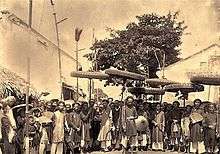

In 1802, when the Nguyễn Dynasty was established and moved the capital to Huế, the old name Thăng Long was modified to become Thăng Long (昇龍, "Soaring Dragon"). In 1831, the Nguyễn emperor Minh Mạng renamed it Hà Nội (河内, "Between Rivers" or "River Interior"). Hanoi was occupied by the French in 1873 and passed to them ten years later. As Hanoï, it was located in the protectorate of Tonkin became the capital of French Indochina after 1887.[10]
During two wars
The city was occupied by the Imperial Japanese in 1940 and liberated in 1945, when it briefly became the seat of the Viet Minh government after Ho Chi Minh proclaimed the independence of Vietnam. However, the French returned and reoccupied the city in 1946. After nine years of fighting between the French and Viet Minh forces, Hanoi became the capital of an independent North Vietnam in 1954.
During the Vietnam War, Hanoi's transportation facilities were disrupted by the bombing of bridges and railways. These were all, however, promptly repaired. Following the end of the war, Hanoi became the capital of a reunified Vietnam when North and South Vietnam were reunited on July 2, 1976.
Modern Hanoi
On May 29, 2008, it was decided that Hà Tây Province, Vĩnh Phúc Province's Mê Linh District and 4 communes of Lương Sơn District, Hòa Bình Province be merged into the metropolitan area of Hanoi from August 1, 2008.[11] Hanoi's total area then increased to 334,470 hectares in 29 subdivisions[12] with the new population being 6,232,940.,[12] effectively tripling its size. The Hanoi Capital Region (Vùng Thủ đô Hà Nội), a metropolitan area covering Hanoi and 6 surrounding provinces under its administration, will have an area of 13,436 square kilometres (5,188 sq mi) with 15 million people by 2020.
Hanoi has experienced a rapid construction boom recently. Skyscrapers, popping up in new urban areas, have dramatically changed the cityscape and have formed a modern skyline outside the old city. In 2015, Hanoi is ranked # 39 by Emporis in the list of world cities with most skyscrapers over 100 m; its two tallest buildings are Hanoi Landmark 72 Tower (336m, tallest in Vietnam and second tallest in south-east Asia after Malaysia's Petronas Twin Towers) and Hanoi Lotte Center (272m, also, second tallest in Vietnam).
Geography
Location, topography
Hanoi is located in northern region of Vietnam, situated in the Vietnam’s Red River delta, nearly 90 km (56 mi) away from the coastal area. Hanoi contains three basic kind of terrain, which are the delta area, the midland area and mountainous zone. In general, the terrain is gradually lower from the north to the south and from the west to the east, with the average height ranging from 5 to 20 meters above the sea level. The hills and mountainous zones are located in the northern and western part of the city. The highest peak is at Ba Vi with 1281 m, located in the western part of the region.
Climate

Hanoi features a warm humid subtropical climate (Köppen Cwa) with plentiful precipitation.[13] The city experiences the typical climate of northern Vietnam, with 4 distinct seasons.[14] Summer, from May until August, is characterized by hot and humid weather with abundant rainfall.[14] September to October is fall, characterized by a decrease in temperature and precipitation.[14] Winter, from November to January, is dry and cool by national standards.[14] The city is usually cloudy and foggy in winter, averaging only 1.5 hours of sunshine per day in February.
Hanoi averages 1,680 millimetres (66.1 in) of rainfall per year, the majority falling from May to September. There are an average of 114 days with rain.[14]
The average annual temperature is 23.6 °C (74 °F) with a mean relative humidity of 79%.[14] The highest recorded temperature was 42.8 °C (109 °F) on May 1926 while the lowest recorded temperature was 2.7 °C (37 °F) on January 1955.[14]
| Climate data for Hanoi (1898–1990) | |||||||||||||
|---|---|---|---|---|---|---|---|---|---|---|---|---|---|
| Month | Jan | Feb | Mar | Apr | May | Jun | Jul | Aug | Sep | Oct | Nov | Dec | Year |
| Record high °C (°F) | 32.0 (89.6) |
34.7 (94.5) |
37.2 (99) |
39.0 (102.2) |
42.8 (109) |
40.4 (104.7) |
40.1 (104.2) |
38.2 (100.8) |
39.0 (102.2) |
35.5 (95.9) |
34.7 (94.5) |
31.5 (88.7) |
42.8 (109) |
| Average high °C (°F) | 19.3 (66.7) |
19.9 (67.8) |
22.8 (73) |
27.0 (80.6) |
31.5 (88.7) |
32.6 (90.7) |
32.9 (91.2) |
31.9 (89.4) |
30.9 (87.6) |
28.6 (83.5) |
25.2 (77.4) |
21.8 (71.2) |
27.0 (80.6) |
| Daily mean °C (°F) | 16.5 (61.7) |
17.5 (63.5) |
20.5 (68.9) |
24.2 (75.6) |
27.9 (82.2) |
29.2 (84.6) |
29.5 (85.1) |
28.8 (83.8) |
27.8 (82) |
25.3 (77.5) |
21.9 (71.4) |
18.6 (65.5) |
24.0 (75.2) |
| Average low °C (°F) | 13.7 (56.7) |
15.0 (59) |
18.1 (64.6) |
21.4 (70.5) |
24.3 (75.7) |
25.8 (78.4) |
26.1 (79) |
25.7 (78.3) |
24.7 (76.5) |
21.9 (71.4) |
18.5 (65.3) |
15.3 (59.5) |
20.9 (69.6) |
| Record low °C (°F) | 2.7 (36.9) |
6.0 (42.8) |
7.4 (45.3) |
13.0 (55.4) |
17.2 (63) |
20.0 (68) |
22.2 (72) |
22.2 (72) |
17.4 (63.3) |
14.0 (57.2) |
10.0 (50) |
5.0 (41) |
2.7 (36.9) |
| Average rainfall mm (inches) | 18.6 (0.732) |
26.2 (1.031) |
43.8 (1.724) |
90.1 (3.547) |
188.5 (7.421) |
239.9 (9.445) |
288.2 (11.346) |
318.0 (12.52) |
265.4 (10.449) |
130.7 (5.146) |
43.4 (1.709) |
23.4 (0.921) |
1,676.2 (65.992) |
| Average rainy days | 8.4 | 11.3 | 15.0 | 13.3 | 14.2 | 14.7 | 15.7 | 16.7 | 13.7 | 9.0 | 6.5 | 6.0 | 144.5 |
| Average relative humidity (%) | 78 | 82 | 83 | 83 | 77 | 78 | 79 | 82 | 79 | 75 | 74 | 75 | 78.8 |
| Mean monthly sunshine hours | 68.2 | 45.2 | 43.4 | 81.0 | 164.3 | 156.0 | 182.9 | 164.3 | 162.0 | 164.3 | 126.0 | 108.5 | 1,466.1 |
| Source #1: World Meteorological Organization,[15] BBC Weather (humidity) [16] | |||||||||||||
| Source #2: Pogoda.ru.net (records),[17] (May record high and January record low only),[14] (sunshine hours only)[18] | |||||||||||||
Administrative divisions
Hà Nội is divided into 12 urban districts, 1 district-leveled town and 17 rural districts. When Ha Tay was merged into Hanoi in 2008, Hà Đông was transformed into an urban district while Sơn Tây degraded to a district-leveled town. They are further subdivided into 22 commune-level towns (or townlets), 399 communes, and 145 wards.

List of local government divisions
| Subdivisions of Hanoi | ||||
|---|---|---|---|---|
| Provincial Cities/Districts[19] | Wards[19] | Area (km2)[19] | Population[19] | |
| 1 town | ||||
| Sơn Tây Town | 15 | 113.474 | 181,831 | |
| 12 urban districts (Quận) | ||||
| Ba Đình District | 14 | 9.224 | 228,352 | |
| Bắc Từ Liêm District | 13 | 43.35 | 320,414 | |
| Cầu Giấy District | 8 | 12.04 | 251,000 | |
| Đống Đa District | 21 | 9.96 | 408,000 | |
| Hai Bà Trưng District | 20 | 14.6 | 378,000 | |
| Hà Đông District | 17 | 47.917 | 250,687 | |
| Hoàn Kiếm District | 18 | 5.29 | 178,073 | |
| Hoàng Mai District | 14 | 41.04 | 358,277 | |
| Long Biên District | 14 | 60.38 | 273,706 | |
| Nam Từ Liêm District | 10 | 32.27 | 232,894 | |
| Tây Hồ District | 8 | 24 | 115,163 | |
| Thanh Xuân District | 11 | 9.11 | 259,000 (2011) | |
| Subtotal | 145 | 233.56 | 3,435,394 | |
| 17 rural districts (Huyện) | ||||
| Ba Vì District | 31 + 1 town | 428.0 | 242,600 (1999) | |
| Chương Mỹ District | 30 + 2 towns | 232.9 | 261,000 (2013) | |
| Đan Phượng District | 15 + 1 town | 76.8 | 124,900 | |
| Đông Anh District | 23 + 1 town | 182.3 | 376,750 (2009) | |
| Gia Lâm District | 20 + 2 towns | 114.0 | 251,275 (2011) | |
| Hoài Đức District | 19 + 1 town | 95.3 | 188,800 | |
| Mê Linh District | 16 + 2 towns | 141.26 | 187,536 (2008) | |
| Mỹ Đức District | 21 + 1 town | 230.0 | 167,700 (1999) | |
| Phú Xuyên District | 26 + 2 towns | 171.1 | 181,500 | |
| Phúc Thọ District | 25 + 1 town | 113.2 | 154,800 (2001) | |
| Quốc Oai District | 20 + 1 town | 136.0 (2001) | 146,700 (2001) | |
| Sóc Sơn District | 25 + 1 town | 306.51 | 254,000 | |
| Thanh Trì District | 15 + 1 town | 63.17 | 241,000 (2009) | |
| Thanh Oai District | 20 + 1 town | 129.6 | 142,600 (2007) | |
| Thạch Thất District | 22 + 1 town | 128.1 | 149,000 (2003) | |
| Thường Tín District | 28 + 1 town | 127.7 | 208,000 | |
| Ứng Hòa District | 28 + 1 town | 183.72 | 193,731 (2005) | |
| Subtotal | 399 + 22 towns | 3,266.186 | 3,972,851 | |
| Total | 559 + 22 towns | 3,344.47 | 7,408,245 | |
Demographics
Hanoi's population is constantly growing (about 3.5% per year), a reflection of the fact that the city is both a major metropolitan area of Northern Vietnam, and also the country's political centre. This population growth also puts a lot of pressure on the infrastructure, some of which is antiquated and dates back to the early 20th century.
The number of Hanoians who have settled down for more than three generations is likely to be very small when compared to the overall population of the city. Even in the Old Quarter, where commerce started hundreds of years ago and consisted mostly of family businesses, many of the street-front stores nowadays are owned by merchants and retailers from other provinces. The original owner family may have either rented out the store and moved into the adjoining house or moved out of the neighbourhood altogether. The pace of change has especially escalated after the abandonment of central-planning economic policies and relaxing of the district-based household registrar system.
Hanoi's telephone numbers have been increased to 8 digits to cope with demand (October 2008). Subscribers' telephone numbers have been changed in a haphazard way; however, mobile phones and SIM cards are readily available in Vietnam, with pre-paid mobile phone credit available in all areas of Hanoi.
Economy
Hanoi has the highest Human Development Index among the cities in Vietnam. According to a recent ranking by PricewaterhouseCoopers, Hanoi will be the fastest growing city in the world in terms of GDP growth from 2008 to 2025.[20] In the year 2013, Hanoi contributed 12.6% to GDP, exported 7.5% of total exports, contributed 17% to the national budget and attracted 22% investment capital of Vietnam. The city's nominal GDP at current prices reached 451,213 billion VND (21.48 billion USD) in 2013, which made per capita GDP stand at 63.3 million VND (3,000 USD).[21] Industrial production in the city has experienced a rapid boom since the 1990s, with average annual growth of 19.1 percent from 1991–95, 15.9 percent from 1996–2000, and 20.9 percent during 2001–2003. In addition to eight existing industrial parks, Hanoi is building five new large-scale industrial parks and 16 small- and medium-sized industrial clusters. The non-state economic sector is expanding fast, with more than 48,000 businesses currently operating under the Enterprise Law (as of 3/2007).[22]

Trade is another strong sector of the city. In 2003, Hanoi had 2,000 businesses engaged in foreign trade, having established ties with 161 countries and territories. The city's export value grew by an average 11.6 percent each year from 1996–2000 and 9.1 percent during 2001–2003. The economic structure also underwent important shifts, with tourism, finance, and banking now playing an increasingly important role. Hanoi's business districts are traditionally Hoàn Kiếm, Đống Đa District and the neighborhood; and a newly developing Cầu Giấy and Từ Liêm in the western part.
Similar to Ho Chi Minh City, Hanoi enjoys a rapidly developing real estate market.[23] The current most notable new urban areas are central Trung Hoa Nhan Chinh, Mỹ Đình, the luxurious zones of The Manor, Ciputra and Times City.
Agriculture, previously a pillar in Hanoi's economy, has striven to reform itself, introducing new high-yield plant varieties and livestock, and applying modern farming techniques.
Together with economic growth, Hanoi's appearance has also changed significantly, especially in recent years. Infrastructure is constantly being upgraded, with new roads and an improved public transportation system.
Landmarks
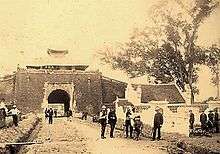
As the capital of Vietnam for almost a thousand years, Hanoi is considered one of the main cultural centres of Vietnam, where most Vietnamese dynasties have left their imprint. Even though some relics have not survived through wars and time, the city still has many interesting cultural and historic monuments for visitors and residents alike. Even when the nation's capital moved to Huế under the Nguyễn Dynasty in 1802, the city of Hanoi continued to flourish, especially after the French took control in 1888 and modeled the city's architecture to their tastes, lending an important aesthetic to the city's rich stylistic heritage. The city hosts more cultural sites than any other city in Vietnam,[24] and boasts more than 1,000 years of history; that of the past few hundred years has been well preserved.[25]
Old Quarter
The Old Quarter, near Hoàn Kiếm Lake, has the original street layout and architecture of old Hanoi. At the beginning of the 20th century the city consisted of only about 36 streets, most of which are now part of the old quarter. Each street then had merchants and households specializing in a particular trade, such as silk or jewelry. The street names nowadays still reflect these specializations, although few of them remain exclusively in their original commerce.[26] The area is famous for its small artisans and merchants, including many silk shops. Local cuisine specialties as well as several clubs and bars can be found here also. A night market (near Đồng Xuân Market) in the heart of the district opens for business every Friday, Saturday, and Sunday evening with a variety of clothing, souvenirs and food.
Some other prominent places are: The Temple of Literature (Văn Miếu), site of the oldest university in Vietnam 1010; One Pillar Pagoda (Chùa Một Cột) which was built based on the dream of king Lý Thái Tông (1028-1054) in 1049 ; Flag Tower of Hanoi (Cột cờ Hà Nội). In 2004, a massive part of the 900-year-old Hanoi Citadel was discovered in central Hanoi, near the site of Ba Đình Square.[27]
Lakes
A city between rivers built from low land, Hanoi has many scenic lakes and is sometimes called "city of lakes." Among its lakes, the most famous are Hoàn Kiếm Lake, West Lake, and Bay Mau Lake (inside Thongnhat Park). Hoan Kiem Lake, also known as Sword Lake, is the historical and cultural center of Hanoi, and is linked to the legend of the magic sword. West Lake (Hồ Tây) is a popular place for people to spend time. It is the largest lake in Hanoi and there are many temples in the area. The lakeside road in the Nghi Tam - Quang Ba area is perfect for bicycling, jogging and viewing the cityscape or enjoying lotus ponds in the summer. The best way to see the majestic beauty of a West lake sunset is to view it from one of the many bars around the lake, especially the Sofitel Plaza rooftop bar.
Colonial Hanoi
Under French rule, as an administrative centre for the French colony of Indochina, the French colonial architecture style became dominant, and many examples remain today: the tree-lined boulevards (e.g. Phan Dinh Phung street) and its many villas and mansions, Grand Opera House, State Bank of Vietnam (formerly The Bank of Indochina), Presidential Palace (formerly the Palace of the Governor-General of French Indochina), St. Joseph's Cathedral, and the historic Hotel Metropole. Many of the colonial structures are an eclectic mixture of French and traditional Vietnamese architectural styles, such as the National Museum of Vietnamese History, the Vietnam National Museum of Fine Arts and the old Indochina Medical College. Gouveneur-Général Paul Doumer (1898-1902) played a crucial role in colonial Hanoi's urban planning. Under his tenure there was a major construction boom.[28]
Critical historians of empire have noted that French colonial rule imposed a system of white supremacy on the city. Vietnamese subjects supplied labor and tax revenue, but the privileges and comforts of the city went to the white population. French efforts at rat eradication revealed some of the colonial city's racial double-standards.[29]

Museums

Hanoi is home to a number of museums:
- National Museum of Vietnamese History
- Vietnam National Museum of Fine Arts
- Vietnam Museum of Ethnology
- Vietnam Museum of Revolution
- Hỏa Lò Prison (Hanoi Hilton)
- Ho Chi Minh Museum
- Hanoi Contemporary Arts Centre
- Vietnam Military History Museum
- Hanoi Museum
Tourism
Hanoi is a very picturesque city, the metropolis sometimes dubbed the Paris of the East. With its tree-fringed boulevards, more than two dozen lakes and thousands of French colonial-era buildings, Hanoi is a popular tourist attraction.
Since 2014, Hanoi has consistently been voted in the world's top ten destinations by TripAdvisor. It ranked 8th in 2014,[30] 4th in 2015[31] and 8th in 2016.[32]
Hanoi is the most affordable international destination in TripAdvisor's annual TripIndex report. Created to help travelers plan and budget their summer holiday, the TripIndex looks at the average cost of a three-night trip in 60 key tourist cities around the world.
Entertainment
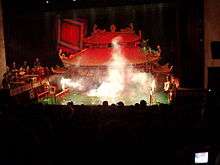
A variety of options for entertainment in Hanoi can be found throughout the city. Modern and traditional theaters, cinemas, karaoke bars, dance clubs, bowling alleys, and an abundance of opportunities for shopping provide leisure activity for both locals and tourists. Hanoi has been named one of the top 10 cities for shopping in Asia by Water Puppet Tours.[33] The number of art galleries exhibiting Vietnamese art has dramatically increased in recent years, now including galleries such as "Nhat Huy" of Huynh Thong Nhat.
A popular traditional form of entertainment is Water puppetry, which is shown, for example, at the Thăng Long Water Puppet Theatre.
Shopping

With rapid economic growth and extremely high population density, many modern shopping centers and megamalls have been opened in Hanoi.
Major malls are:
- Trang Tien Plaza, High-end Mall on Trang Tien street (right next to Hoàn Kiếm Lake), Hoàn Kiếm District
- Vincom Center, a modern mall with hi-end CGV cineplex, Ba Trieu Street (just 2 km from Hoan Kiem lake), Hai Bà Trưng District
- Parkson Department Store, Tây Sơn Street, Đống Đa District;
- The Garden Shopping Center, Me Tri - Mỹ Đình, Từ Liêm District
- Indochina Plaza, Xuan Thuy street, Cầu Giấy District
- Vincom Royal City Megamall, the largest underground mall in Asia with 230,000 square metres of shops, restaurants, cineplex, waterpark, ice skating rink; Nguyen Trai street (approx 6 km from Hoan Kiem Lake), Thanh Xuân District
- Vincom Times City Megamall, another megamall of 230,000 square metres including shops, restaurants, cineplex, huge musical fountain on central square and a giant aquarium; Minh Khai street (approx 5 km from Hoan Kiem Lake), Hai Ba Trung district
- Lotte Department Store, opened September 2014, Liễu Giai Street, Ba Đình District
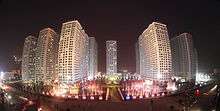 Times City mall
Times City mall - Aeon Mall Long Bien opened last October 2015, Long Bien District
Cuisine
Hanoi has rich culinary traditions. Many of Vietnam's most famous dishes, such as phở, chả cá, bánh cuốn and cốm are believed to have originated in Hanoi. Perhaps most widely known is Phở—a simple rice noodle soup often eaten as breakfast at home or at street-side cafes, but also served in restaurants as a meal. Two varieties dominate the Hanoi scene: Phở Bò, containing beef, Phở Gà, containing chicken, Bún chả, containing pork.
Vietnam's national dish phở has been named as one of the Top 5 streetfoods in the world by globalpost.[34]
Hanoi has a number of restaurants whose menus specifically offer dishes containing dog, snake[35][36] and various species of insects. Insect-inspired menus can be found at a number of restaurants in Khuong Thuong village, Hanoi.[37] The signature dishes at these restaurant are those containing processed ant-eggs, often in the culinary styles of Thai people or Vietnam's Muong and Tay ethnic people.[38]
Education

Hanoi, as the capital of French Indochina, was home to the first Western-style universities in Indochina, including: Indochina Medical College (1902) - now Hanoi Medical University, Indochina University (1904) - now Hanoi National University (the largest), and École Supérieure des Beaux-Arts de l'Indochine (1925) - now Hanoi University of Fine Art.
After the Communist Party took control over Hanoi in 1954 with support from the Soviet Union, many new universities were built, among them, Hanoi University of Technology, still the largest technical university in Vietnam. Recently ULIS (University of Languages and International Studies) was rated as one of the top universities in south-east Asia for languages and language studies at the undergraduate level.[39] Other universities that are not part of Vietnam National University or Hanoi University include Hanoi School for Public Health and Hanoi School of Agriculture and University of Transport and Communications.
Hanoi is the largest center of education in Vietnam. It is estimated that 62% of the scientists in the whole country are living and working in Hanoi.[40] Admissions to undergraduate study are through entrance examinations, which are conducted annually and open for everyone (who has successfully completed his/her secondary education) in the country. The majority of universities in Hanoi are public, although in recent years a number of private universities have begun operation. Thăng Long University, founded in 1988, by some Vietnamese mathematics professors in Hanoi and France[41] is the first private university in Vietnam. Because many of Vietnam's major universities are located in Hanoi, students from other provinces (especially in the northern part of the country) wishing to enter university often travel to Hanoi for the annual entrance examination. Such events usually take place in June and July, during which a large number of students and their families converge on the city for several weeks around this intense examination period. In recent years, these entrance exams have been centrally coordinated by the Ministry of Education, but passing marks are decided independently by each university.
Although there are state owned kindergartens, there are also many private ventures that serve both local and international needs. Pre-tertiary (elementary and secondary) schools in Hanoi are generally state run, but there are also some independent schools. Education is equivalent to the K–12 system in the U.S., with elementary school between grades 1 and 5, middle school (or junior high) between grades 6 and 9, and high school from grades 10 to 12.
Transport

Hanoi is served by Noi Bai International Airport, located in the Soc Son District, approximately 15 km (9 mi) north of Hanoi. The new international terminal (T2), designed and built by Japanese contractors, opened in January 2015 and is a big facelift for Noibai International Airport. In addition, a new highway and the new Nhat Tan cable-stay bridge connecting the airport and the city center opened at the same time, offering much more convenience than the old road (via Thanglong bridge). Taxis are plentiful and usually have trip meters, although it is also common to agree on the trip price before taking a taxi from the airport to the city centre.
Hanoi is also the origin or departure point for many Vietnam Railways train routes in the country. The Reunification Express (tàu Thống Nhất) runs from Hanoi to Ho Chi Minh City from Hanoi station (formerly Hang Co station), with stops at cities and provinces along the line. Trains also depart Hanoi frequently for Hai Phong and other northern cities. The Reunification Express line was established during French colonial rule and was completed over a period of nearly forty years, from 1899 to 1936.[42] The Reunification Express between Hanoi and Ho Chi Minh City covers a distance of 1,726 km (1,072 mi) and takes approximately 33 hours.[43] As of 2005, there were 278 stations on the Vietnamese railway network, of which 191 were located along the North-South line.

The main means of transport within Hanoi city are motorbikes, buses, taxis, and a rising number of cars. In recent decades, motorbikes have overtaken bicycles as the main form of transportation. The increased number of motorcycles can cause gridlock. To minimize this and the negative consequences for the environment and health, the local government is trying to increase public transportation.[44] Public buses run on many routes and fares can be purchased on the bus, with very cheap prices (30 cents for a journey where a taxi might cost $10).
There are 2 metro lines under construction in Hanoi now.[45] The first one is expected to be operational in 2016, the second in 2018.
Persons on their own or traveling in a pair who wish to make a fast trip around Hanoi to avoid traffic jams or to travel at an irregular time or by way of an irregular route often use "xe ôm" (literally, "hug bike"). Motorbikes can also be rented from agents within the Old Quarter of Hanoi.[46]
Sports

There are several gymnasiums and stadiums throughout the city of Hanoi. The biggest ones are Mỹ Đình National Stadium (Lê Đức Thọ Boulevard), Quan Ngua Sporting Palace (Văn Cao Avenue), Hanoi Aquatics Sports Complex and Mỹ Đình Indoor Athletics Gymnasium. The others include Hà Nội Stadium (as known as Hàng Đẫy stadium). The third Asian Indoor Games were held in Hanoi in 2009. The others are Hai Bà Trưng Gymnasium, Trịnh Hoài Đức Gymnasium, Vạn Bảo Sports Complex.
Health care and other facilities

Some medical facilities in Hanoi:
- Bạch Mai Hospital
- Viet Duc Hospital
- Saint Paul Hospital
- Hospital 108
- Hôpital Français de Hanoi
- International SOS
- Hanoi Medical University Hospital
- Thanh Nhan Hospital
- Vinmec International Hospital
International relations
Hanoi is a member of the Asian Network of Major Cities 21 and the C40 Cities Climate Leadership Group.
Twin towns and sister cities
Hanoi is twinned with:
Image gallery
 Tháp Bút (Pen Tower) with a phrase "Tả thanh thiên" (meaning "Write on the sky") next to Hoàn Kiếm Lake (2007)
Tháp Bút (Pen Tower) with a phrase "Tả thanh thiên" (meaning "Write on the sky") next to Hoàn Kiếm Lake (2007) Presidential Palace, Hanoi (formerly Place of The Governor-General of French Indochina)
Presidential Palace, Hanoi (formerly Place of The Governor-General of French Indochina) State Guest House
State Guest House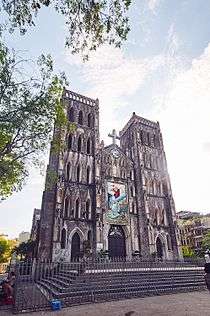 The cathedral St-Joseph
The cathedral St-Joseph National Museum of Fine Art
National Museum of Fine Art Park of Reunification (former Vladimir Lenin park)
Park of Reunification (former Vladimir Lenin park) Parliament House
Parliament House
See also
| Wikimedia Commons has media related to Hanoi. |
- Gioi Market
- Đồng Xuân Market
- Ho Chi Minh City
- North–South Railway (Vietnam)
- List of historical capitals of Vietnam
References
- 1 2 Statistical Handbook of Vietnam 2014, General Statistics Office Of Vietnam
- ↑ Definition of Hanoi in Oxford dictionary (British & World English)
- ↑ Definition of Hanoi in Oxford dictionary (American English)
- ↑ Nguyễn, Đình-Hoà (1997), Vietnamese: Tiếng Việt không son phấn, Amsterdam: John Benjamins Publishing Company, ISBN 1-55619-733-0
- ↑ General Statítcs Office ò Vietnam
- ↑ "Government of Vietnam". General Statistics office of Vietnam.
- ↑ LE-QUYEN LE (18 May 2010). "Commemorating 1,000 Years of the Founding of Hanoi". Vietnam Talking Points. Vietnam Talking Points. Retrieved 4 November 2012.
- ↑ Ray, Nick; et al. (2010), "Co Loa Citadel", Vietnam, Lonely Planet, p. 123, ISBN 9781742203898.
- 1 2 "Historical stages of Thang Long- Hanoi - 1000 Years Thang Long (VietNamPlus)". En.hanoi.vietnamplus.vn. Retrieved 2013-11-24.
- 1 2 http://www.roughguides.com/destinations/asia/vietnam/hanoi-and-around/
- ↑ "Country files (GNS)". National Geospatial-Intelligence Agency. Retrieved 2007-04-06.
- 1 2 "Hơn 90% đại biểu Quốc hội tán thành mở rộng Hà Nội". Dantri. Retrieved 2008-05-29.
- ↑ Peel, M. C. and Finlayson, B. L. and McMahon, T. A. (2007). "Updated world map of the Köppen–Geiger climate classification" (PDF). Hydrol. Earth Syst. Sci. 11: 1633–1644. doi:10.5194/hess-11-1633-2007. ISSN 1027-5606.
- 1 2 3 4 5 6 7 8 "KHÁI QUÁT VỀ HÀ NỘI" (in Vietnamese). Hanoi.gov.vn. Archived from the original on February 21, 2009. Retrieved October 17, 2015.
- ↑ "World Weather Information Service - Hanoi". World Meteorological Organization. Retrieved August 11, 2012.
- ↑ "BBC Weather - Hanoi". BBC News. BBC. Retrieved 2011-07-28.
- ↑ "ПОГОДА в Ханое" [Weather in Hanoi] (in Russian). Weather and Climate (Погода и климат). Retrieved October 17, 2015.
- ↑ "Solar Energy and Solar Photovoltaics in Vietnam". Retrieved May 15, 2013.
- 1 2 3 4 "Cổng giao tiếp điện tử Thành Phố Hà Nội". Hanoi.gov.vn. 2009-06-26. Retrieved 2010-06-18.
- ↑ "Hanoi and Ho Chi Minh City are topping the world's highest economic growth cities in 2008-2025" (PDF). PricewaterhouseCoopers. 2009-11-10.
- ↑ http://thongkehanoi.gov.vn/uploads/files/source/NGTK%202013%20-TKQG%20%20Ngan%20sach%20ngan%20hang.pdf
- ↑ "'Tram hoa' doanh nghiep dua no". VnExpress.
- ↑ "NLĐO - Bat dong san Ha Noi soi dong ~ Bất động sản Hà Nội sôi động - KINH TẾ - TIÊU DÙNG".
- ↑ "The quick look at Hanoi". Vietnam National Administration of Tourism.
- ↑ "Introduction to Hanoi". The New York Times from Frommer's. November 20, 2006. Retrieved May 4, 2010.
- ↑ 'A Scholar's Memoirs of the 36 Streets', in: Forbes, Andrew, and Henley, David: Vietnam Past and Present: The North (History and culture of Hanoi and Tonkin). Chiang Mai. Cognoscenti Books, 2012. ASIN: B006DCCM9Q.
- ↑ Pinkowski, Jennifer (October 16, 2007). "Thăng Long the ancient city underneath Hanoi". New York Times. Retrieved 2007-10-22.
- ↑ Michael G. Vann, “Building Whiteness on the Red River: Race, Power, and Urbanism in Paul Doumer’s Hanoi, 1897-1902," Historical Reflections/Réflexions Historiques, 2007
- ↑ Michael G. Vann, "Of Rats, Rice, and Race: The Great Hanoi Rat Massacre, an Episode in French Colonial History," French Colonial History, May, 2003
- ↑ http://www.businessinsider.com/tripadvisors-most-popular-travel-destinations-2014-4?op=1
- ↑ http://www.cnn.com/2015/03/24/travel/gallery/tripadvisor-top-world-destinations-2015/
- ↑ http://www.cnn.com/2016/03/21/travel/tripadvisor-top-world-destinations-2016-feat/
- ↑ "Detailed results and winners of the online Smart Travel Asia Best in Travel Poll 2009". Smarttravelasia.com. Retrieved 2010-06-18.
- ↑ "Best Street Food | Vietnamese Pho | Peruvian Food". Globalpost.com. Retrieved 2010-06-18.
- ↑ "Nguyen Van Duc Snake Restaurant". TNH Hanoi. TNH. Retrieved 4 November 2012.
- ↑ Will Chase (2005). "Culinary Adventures in Hanoi". Will Chase Arts. Will Chase. Retrieved 4 November 2012.
- ↑ VietNamNet Bridge (1 June 2007). "Insect food in Hanoi". VietNamNet Bridge. VietNamNet Bridge. Retrieved 4 November 2012.
- ↑ "Caught the bug yet?". Restaurants in Hanoi. Restaurants in Hanoi. Retrieved 4 November 2012.
- ↑ "Vietnam National University, Hanoi". Top Universities. 2012-12-08. Retrieved 2013-11-24.
- ↑ "Hanoi - The capital of Vietnam: Preface". Hanoi City People's Committee.
- ↑ Viet Nam News (1998-04-09). "Viet Nam News". Vietnamnews.vnagency.com.vn. Retrieved 2010-06-18.
- ↑ "Socialist Republic of Viet Nam: Greater Mekong Subregion Kunming–Hai Phong Transport Corridor: Yen Vien–Lao Cai Railway Upgrading Project" (PDF). Report and Recommendation of the President to the Board of Directors: Project Number: 39175: Asian Development Bank. Asian Development Bank. November 2006. Retrieved 4 November 2012.
- ↑ Mark Smith (19 May 2012). "A fast, vast steel spine". Sydney Morning Herald. Retrieved 4 November 2012.
- ↑ Hans-Heinrich Bass; Thanh Trung Nguyen (March 2013). "Imminent gridlock". dandc.eu.
- ↑ http://www.ft.com/cms/s/0/dde43a4a-c0de-11e5-a8c6-deeeb63d6d4b.html
- ↑ "Getting Around Hanoi". Frommer's. John Wiley & Sons, Inc. Retrieved 4 November 2012.
- ↑ Ilia Lobster (9 September 2009). "Astana-Hanoi: horizons of cooperation". KazPravda.kz. Retrieved 9 October 2014.
- ↑ "Kardeş Kentleri Listesi ve 5 Mayıs Avrupa Günü Kutlaması [via WaybackMachine.com]" (in Turkish). Ankara Büyükşehir Belediyesi - Tüm Hakları Saklıdır. Archived from the original on 14 January 2009. Retrieved 2013-07-21.
- ↑ "Miasta partnerskie Warszawy - Strona 4". um.warszawa.pl. Biuro Promocji Miasta. 2005-05-04. Retrieved 2011-06-17.
- ↑ "Hanoi Days in Moscow help sister cities". Vbusinessnews.com.
- ↑ "National Commission for Decentralised cooperation". Délégation pour l’Action Extérieure des Collectivités Territoriales (Ministère des Affaires étrangères) (in French). Retrieved 2013-12-26.
- ↑ "International Cooperation: Sister Cities". Seoul Metropolitan Government. www.seoul.go.kr. Archived from the original on 10 December 2007. Retrieved 26 January 2008.
- ↑ "Seoul -Sister Cities [via WayBackMachine]". Seoul Metropolitan Government (archived 2012-04-25). Retrieved 2013-08-23.
- ↑ "Sister Cities". Phnompenh.gov.kh. Retrieved 2013-03-26.
- ↑ "Thủ tướng Nguyễn Tấn Dũng hội kiến Tổng thống Seychelles". BÁO ĐIỆN TỬ CỦA CHÍNH PHỦ NƯỚC CỘNG HÒA XÃ HỘI CHỦ NGHĨA VIỆT NAM. Retrieved 2013-08-29.
- Bibliography
- Boudarel, Georges (2002). Hanoi: City Of The Rising Dragon. Rowman & Littlefield Publishers, Inc. ISBN 0-7425-1655-5.
- Forbes, Andrew, and Henley, David: Vietnam Past and Present: The North (History and culture of Hanoi and Tonkin). Chiang Mai. Cognoscenti Books, 2012. ASIN: B006DCCM9Q.
- Logan, William S. (2001). Hanoi: Biography of a City. University of Washington Press. ISBN 0-295-98014-1.
External links
- Official Site of Hanoi Government
- An article in New York Times about Hanoi
 Hanoi travel guide from Wikivoyage
Hanoi travel guide from Wikivoyage
 |
Thái Nguyên Province |  | ||
| Phú Thọ Province | |
Bắc Ninh Province | ||
| ||||
| | ||||
| Hà Nam Province |
